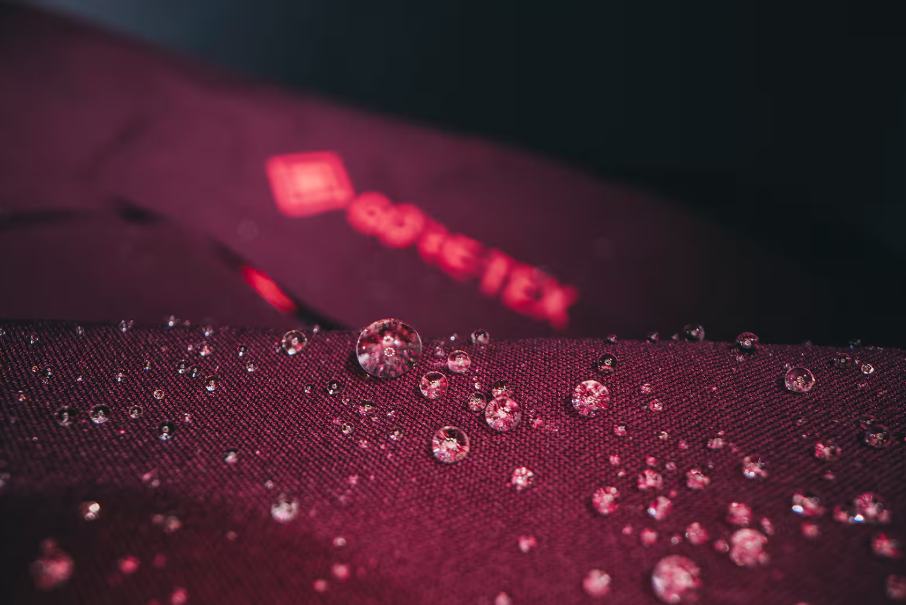How Can We Improve DWR Coating Durability to Reduce Environmental Impact?
How Can We Improve DWR Coating Durability to Reduce Environmental Impact?
DWR Coating and Its Environmental Significance
What Is DWR Coating and How Does It Run?
Durable Water Repellent (DWR) coating is a chemical top put on cloth outside to make it push water while keeping air flow. When done right, it makes water drops ball up and slide off instead of sink in. This matters much for outdoor gear like rain coats, hike wear, and tech clothes where dry stay is key.
The idea of DWR coating cuts cloth surface pull. By pushing water at tiny level, the top keeps garment fight rain and wet. This shows in items like waterproof jackets and high-work outerwear.
Why Boost DWR Lasting for Earth Good?
Many old DWR tops use perfluorinated compounds (PFCs), special long-chain like C8 fluorocarbons. These don’t break easy in wild and build in nature systems, making long mess. Often new tops just add earth hit from more chemical make and trash.
Boost lasting of a DWR coat means less tops over item life, cutting chemical leak and make smoke. It also stretches garment work years, cutting total buy—a big part in green fashion ways.

Factors That Affect the Longevity of a DWR Coat
What Makes DWR Tops Fade Over Time?
Even strong, DWR tops don’t last forever. Day use puts garments to things that cut water push skill. Wash with soaps, special with soft add or bleach, can pull top off. Rub from pack straps, bend at joints, and body move add wear.
Dirt like body oil, dust, sun cream, or food fat can hurt DWR coat work by block cloth top. Plus, long sun rays and hot may break treat chemical over time.
How Cloth Kind Shapes DWR Work
Not all cloths act same with DWR tops. Fake fibers like polyester and nylon have smooth tops that let chemical stick even and tough. These cloths often in tech outerwear for fit with DWR tech.
Nature fibers like cotton or wool take wet and need other mix or blends for good water push. Some cases, mix cloths join fake and nature for max comfort and work.
How to Keep DWR Coating?
Top Ways for Wash and Dry DWR Coat
To stretch dwr coating life, right garment care key. Always wash coat with mild soaps free from cloth soft, enzyme, or bleach. These add can break or pull top from cloth.
Use cold or warm water on soft spin to cut hard shake. After wash, tumble dry low heat if tag lets—heat can wake some DWR kinds by line molecules for best work.
When and How to Put New DWR Treat
Over time, even good keep jackets need fresh DWR. Easy test: sprinkle water on top—if ball up, top good; if sink, need new.
New put can use store spray or wash-in made for outerwear. Make sure cloth clean before for best. Follow maker rules close for full cover and top power.
What Is Eco-DWR? Exploring Sustainable Alternatives
How Do Eco-DWR Fixes Differ from Old Ones?
Eco-DWR tech come as safer earth picks to old fluorinated stuff. These mix skip long-chain PFCs (like C8) and use short-chain fluorocarbons (C6), silicone mix, hydrocarbon polymers, or plant bits.
These now fixes aim balance work and earth duty. By cut lasting mess from mix, eco-DWRs much lower nature hit without lose use.
Are Green Water Push as Good?
Steps in cloth chem much better green push work. Early kinds need often new and gave weak guard in hard, now eco-DWR goods way tougher.
Some may need bit more care than old tops, but less poison and better break make worthy swap for earth-mind buyers.
 Stuff New: How Boost DWR Coating Last?
Stuff New: How Boost DWR Coating Last?
Steps in Chemical Mix for Longer Guard
Now new in polymer science give tougher dwr coating picks. New chem build better stick between push bits and cloth fibers, giving longer wet guard.
Cross link tech more boost tough by make chem bridges in top layer. These link bonds fight wash, rub, and wild hit better than old mix.
Part of Cloth Build in Stretch Coating Life
Past chem, cloth make plays big in stretch DWR coat life. Tight weaves stop water in and cut need chem tops alone.
Mix yarns join fake and nature can build for more strength, stretch, and water hate. These new make cloths keep water push longer while give more comfort and bend for users.
Focus on INVIDIA TEXTILE: Duty to Tough, Green Fixes
Who Is INVIDIA TEXTILE and What Do They Give?
INVIDIA TEXTILE is trust OEM jacket maker with 15 years in cloth field. We give custom fixes like Down/Puffy Jacket, Trench Coat/Blazers, Quilted/Padded Jacket, Wool Coat/Sweaters, PU/Shearling Coat, Rainwear/Sporty Coat for you.
Our low MOQ 300 pieces makes service open to new brands while keep big make skill. We give high-quality, style jackets that show new fashion. Our quality checks make sure each jacket hits hard work expect like warm keep, UV guard, and long wear fight.
How INVIDIA TEXTILE Boost Work and Green
We mix own green-mind dwr coating tech in lines to balance push, air, and last. Our top quilt ways and no-seam weld boost garment build while cut earth hit.
By keep close ties with over 20 check suppliers in Zhejiang cloth world, we make sure all stuff fit work needs and green aims. Our jackets get full test for cloth hold, giving great warm, UV guard, and tough.
Usein kysytyt kysymykset
Q: Does DWR reduce breathability?
A: No, most modern DWR coatings are designed to maintain breathability by forming a surface barrier rather than sealing pores within the fabric.
Q: How often should I reapply a DWR coat treatment?
A: Reapplication is generally needed after 10–20 washes or when water stops beading off the surface—whichever comes first.
Q: Can I apply eco-DWR at home myself?
A: Yes, several eco-friendly spray-on or wash-in products are available for home use; always follow manufacturer instructions for best results.
Q: Are there any performance differences between eco-DWR and traditional treatments?
A: While modern eco-DWRs have improved significantly in performance and durability, some may require more frequent application but offer reduced environmental risk.
Q: Is there a difference in how synthetic vs natural fabrics hold DWR?
A: Yes. Synthetic materials like nylon or polyester bond better with DWR treatments compared to natural fibers which may need special formulations for effective repellency.

 +86-13634185427
+86-13634185427




